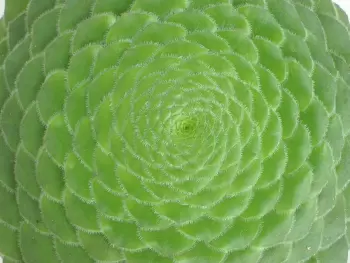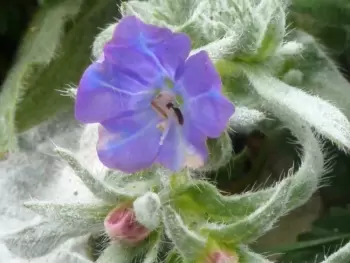Flora in La Gomera
Climate - Ressources - Culture - Histoire - Nature - Garajonay National Park - Protected areas
Fauna - Flora - Geology - Silbo Gomero
The flora of La Gomera is of great scientific interest, with a high percentage of plants endemic to the Canaries and a large quantity of species which are exclusive to the island.
 The vegetation of La Gomera, like of the other mountainous islands of the archipelago, is conditioned by the height and orientation of each zone.
The vegetation of La Gomera, like of the other mountainous islands of the archipelago, is conditioned by the height and orientation of each zone.
Brushwood in BenchijiguaThe lower areas with a scarcity of rainfall are covered by a very characteristic brushwood, made up of spurges and thistles, and others crass plants such as verodes and cardoncillos.
covered by a very characteristic brushwood, made up of spurges and thistles, and others crass plants such as verodes and cardoncillos.
On the more humid slopes of the northern facade and in the bottoms of the ravines, palm groves and the remains of ancient thermophile forest, formed by wild olive trees, almacigos and Phoenician junipers are found. Nowadays these have been pushed out by the cultivated lands, but in Vallehermoso there is still a considerable extension of Phoenician juniper.
At about 500 m of altitude the constant mists allow the development of the laurisilva, humid laurel forests of great exuberance which have their best specimens in La Gomera. They consist of evergreen trees and coriácea, such as laurel and other species of the family (viñatigos, tiles or barbuzanos). Their trunks are tortuous and their tops are close together. Abundant moss and lichens cover their branches.  On the crests of the most exposed heights and over 1000 m, the laurisilva gives way to a lower forest formed by giant heather, acebiños and faya.
On the crests of the most exposed heights and over 1000 m, the laurisilva gives way to a lower forest formed by giant heather, acebiños and faya.
 There were no pine tree groves in La Gomera, although some pine have been planted in the repopulation process.
There were no pine tree groves in La Gomera, although some pine have been planted in the repopulation process.
On the rocks and exposed cliffs of the humid zones grow madroños (strawberry trees) and Canary juniper, and dense concentrations of crass plants (stonecrops, sow-thistles, etc.).
In the south the vegetation is somewhat different : shrub formations grow to greater height, the thermophile forests are secluded in ravines and protected areas, and there are only forests where the mists manage to cross over the peaks.


